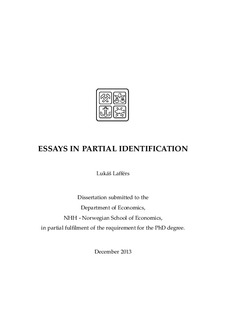| dc.description.abstract | This paper provides a novel, simple, and computationally tractable method for determining
an identified set that can account for a broad set of economic models when the
economic variables are discrete. Using this method, we show using a simple example
how imperfect instruments affect the size of the identified set when the assumption
of strict exogeneity is relaxed. This knowledge is of great value, as it is interesting to
know the extent to which the exogeneity assumption drives results, given it is often
a matter of some controversy. Moreover, the flexibility obtained from our newly proposed
method suggests that the determination of the identified set need no longer be
application specific, with the analysis presenting a unifying framework that algorithmically
approaches the question of identification. | nb_NO |
